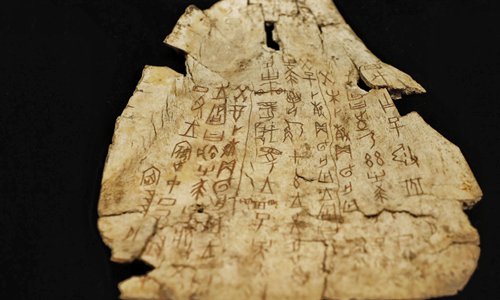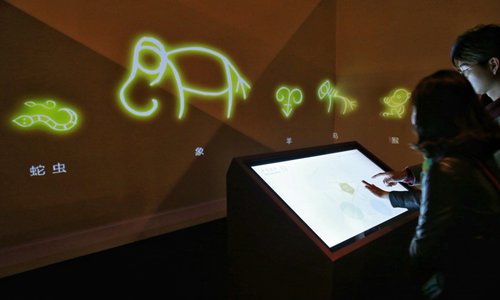
From the People's Daily App.
This is Story in the Story.
Known as “jiaguwen” in Chinese, this primitive ancestor of today's Chinese characters was carved on tortoise shells and animal bones during divination rights in the Shang Dynasty (1600-1046BC) and early Western Zhou Dynasty (1046-771BC).
Roughly 4,000 Chinese characters have been catalogued from inscriptions spread out on about 130,000 to 170,000 oracle bones unearthed in China, among which the meaning of only about 1,400 to 1,500 of these characters have been identified.
First unearthed in 1899, oracle bone inscriptions were listed by UNESCO in the Memory of the World Register in 2017.
First excavated from the Yin Ruins in Anyang, Central China's Henan Province, oracle bone characters make up the oldest known writing system in China and are the only form of ancient writing in existence that has been passed down to the present.
The inscriptions recorded measures to fight against epidemics, including acupuncture, moxibustion and quarantine, in addition to numerology and offering sacrifices.
In fact, more than 50 diseases have been recorded in excavated inscriptions on bones and shells in China.
Today’s Story in the Story looks at China’s oracle bone inscriptions, the longest surviving writing system in the world.

An oracle bone inscription(Photo: GT)
The inscriptions on excavated bones and shells showed that Chinese people had knowledge of epidemics in ancient China, according to a Chinese archaeologist.
During the Shang Dynasty (1600 BC-1046 BC), when epidemics were rampant, people resorted to witchcraft or offered sacrifices to ward off evil spirits, and officials used governmental measures to prevent disease transmission, said Song Zhenhao, an expert on ancient oracle bone inscriptions from the Chinese Academy of Social Sciences.
Oracle bone inscriptions, or “Jiaguwen,” are an ancient Chinese language named for their inscriptions on tortoise shells and animal bones. They are a primitive form of Chinese characters and the oldest fully developed characters in China.
Some traditional ways to fight viruses took shape in ancient China, Song said.
For example, an ox bone was found in a Shang Dynasty ruins site in the city of Anyang, in central China's Henan Province. On the bone were several ancient inscriptions, which said that during epidemics, a series of sacrificial ceremonies were held to get rid of the diseases. The inscriptions were believed to be the earliest written records about epidemics in China.
According to Song, so far, more than 50 diseases have been recorded in excavated inscriptions on bones and shells in China.
"These diseases have a very detailed explanation, which shows the Shang people were in awe of the diseases," Song said.
From the specific wording of the inscriptions, Song concluded that "medical science had reached a high level" at that time.
"People already knew about epidemics and disease transmission among people more than 3,000 years ago," Song said.
"Some of these inscriptions also wrote about quarantine measures, which means people were proactively doing something to stay away from epidemics," Song said. "There were also measures against rumormongering to maintain stability."
"For the four great ancient civilizations, hieroglyphics from ancient Egypt, cuneiform from ancient Babylon and Mayan glyphs from Mesoamerica, oracle bone inscriptions are the only ones that have survived. They were passed on and evolved into today's Chinese characters," said Wang Chunfa, curator of the National Museum.

Visitors explore the oracle bone exhibition at the National Museum of China. (Photo: GT)
Oracle bone inscriptions are extremely valuable because they provide first-hand accounts of important events and situations in ancient China such as sacrificial and religious ceremonies, wars and military battles, farming and husbandry, even illnesses and births.
The transcriptions usually feature three to four parts.
The first part usually includes information such as the date, location and participants in the divination, the second includes the question or matter to be divined, while the third features the prediction. The fourth part, when it is included, usually records what actually happened, in other words, if the prediction came true.
During the divination ceremony, the diviner would pose a question, then hold a hot poker to the bones, the high heat would cause cracks to appear throughout the bone, which the diviner would then use to determine the answer to the question.
Currently only a small percentage of the about 10,000 characters contained in Chinese oracle-bone inscriptions have been successfully interpreted and experts have stressed the importance of learning the rest.
(Produced by Nancy Yan Xu, Lance Crayon, Brian Lowe and Da Hang. Music by bensound.com. Text from China Daily and Global Times.)


